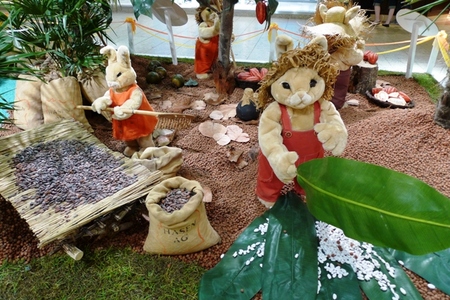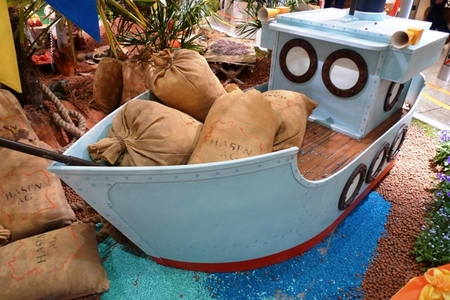In Germany, the secular side of Easter revolves around rabbits and eggs. I'm still a little unclear on the whole rabbits hatching from eggs part of Easter, but that's not something unique to Germany.
The chocolate bunnies here come in every shape and size and flavor, from white to dark chocolate, and from chocolate for kids with extra calcium to chocolate for adults with liqueur.
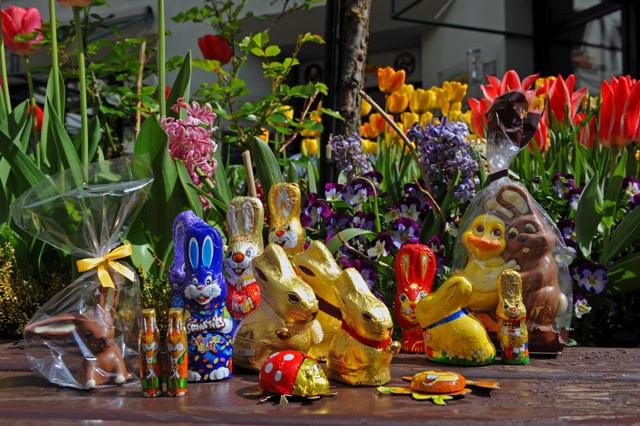
By far the most well-known are Lindt's Gold Hase, which have been made for more than 50 years. According to Lindt's site,
One fine spring morning in March when the ground was still covered with a white blanket of snow, a master chocolatier from LINDT observed little rabbit in his garden. His little son was completely fascinated when he saw the hare, but began to cry when the rabbit disappeared into the bushes.
Struck by the his son's sadness, the father suddenly had a great idea:"I should make a rabbit like that of chocolate ..."
He made a rabbit out of finest Lindt milk chocolate, wrapped it in gold paper and hung him a golden bell on a red ribbon around his neck so he would not be lost.
"When the bell rings, you can find it easily," the choclatier said to his young son. And so the first GOLDHASE had come into this world.
However the tradition began, the Goldhasen are now one of the best known international Easter sweets. They emerge from eggs and come in sizes from baby up to 1 kg giants.
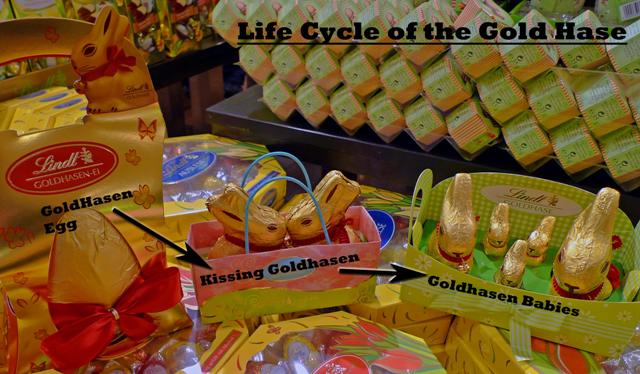
This year, Lindt introduced the dark chocolate (brown ribbon) and white chocolate (white ribbon) varieties to go with the traditional red-ribboned milk chocolate Goldhase.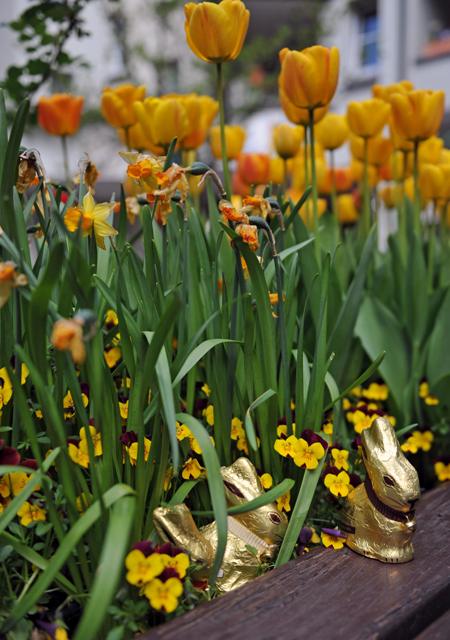
Though chocolate is the main event, everyone else gets in on Easter bunny mania, too....we find rabbit shaped cookies and breads and rabbit-shaped versions of most candy bars.
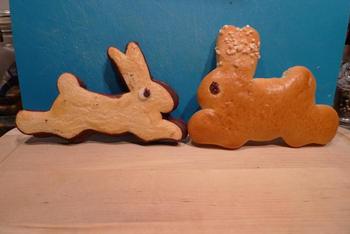 Chocolate-dipped shortbread sandwich and rabbit bread
Chocolate-dipped shortbread sandwich and rabbit bread

And it wouldn't be Easter in Germany without an elaborately creative themed educational display. In PEP (the closest thing in Munich to an American-style mall), they have displays throughout the mall using the fictional Rabbit Co. ("Hasen AG") to teach children how chocolate is made - from harvest to chocolate egg.
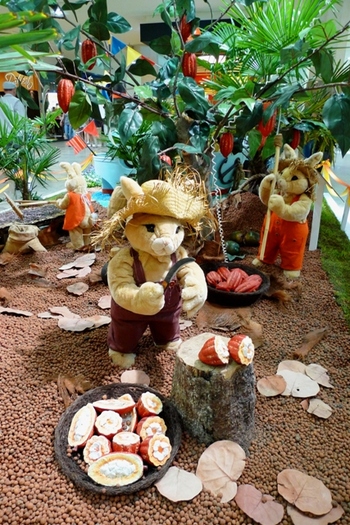 Growing and Harvesting the cacao Beans
Growing and Harvesting the cacao Beans
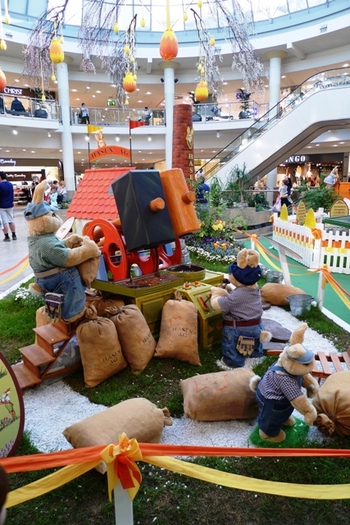 Pulverizing and Processing the Beans
Pulverizing and Processing the Beans
Making Chocolate and Molding Chocolate Eggs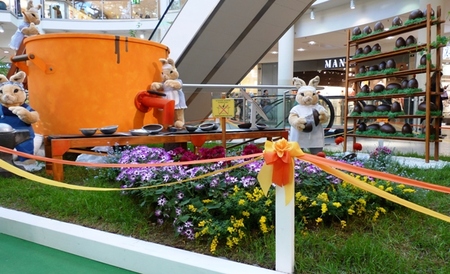
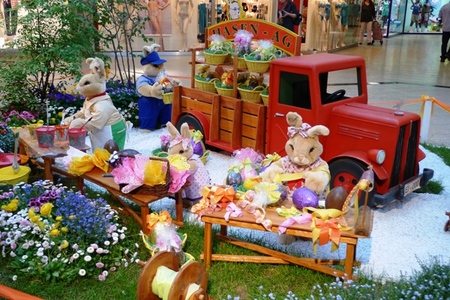 Painting, Wrapping, and Shipping Chocolate Eggs
Painting, Wrapping, and Shipping Chocolate Eggs
The detail in these displays was amazing, down to planting flowers and aging the printing on the cacao bean bags. Of course there were signs at each display explaining the steps of the chocolate making process. And at the end, a cage full of adorable real rabbits to see. Unfortunately not a petting zoo, but still adorable!
